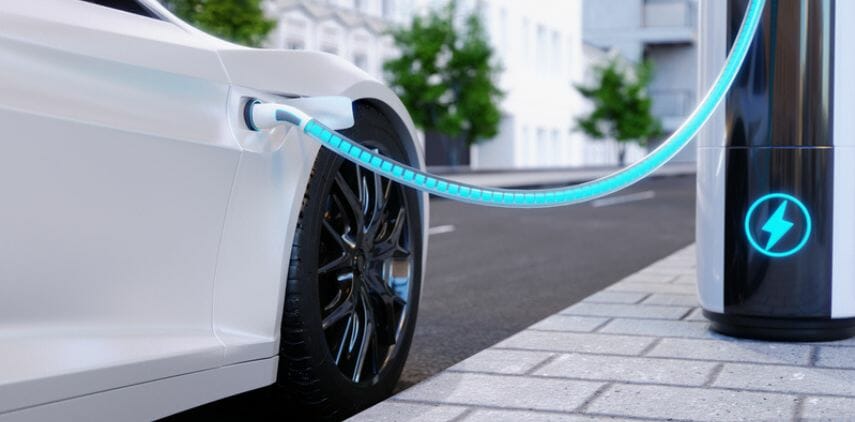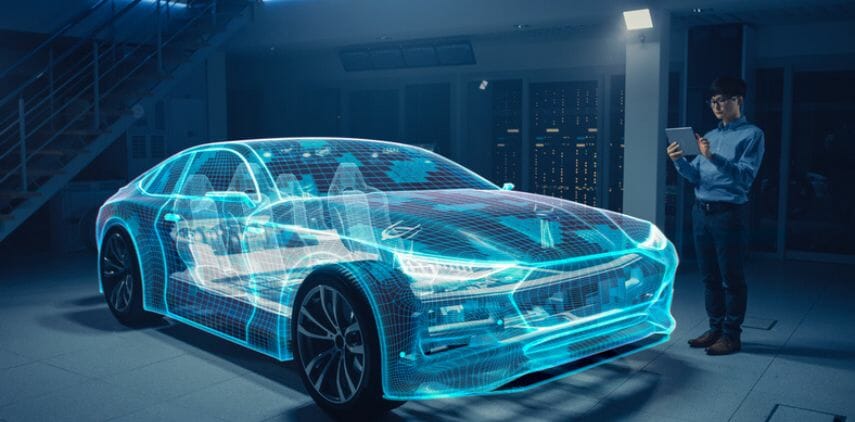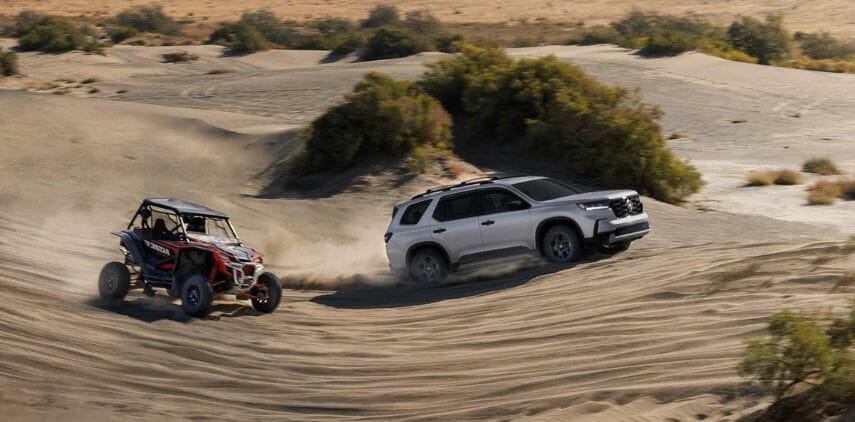Overview
Anyone searching for a new vehicle will notice that the SUV market is heavily peppered with compact and subcompact SUVs. While those new to the world of SUVs often wonder what the difference is, the reality is that it depends on who you ask. Every automotive company has a different definition for these vehicles, so there’s no clear criteria for either category.
Despite this, there are a few general distinctions between the two types of SUV. Investigate the difference between compact and subcompact SUVs, how they differ from typical SUVs, and how you can decide which one is right for you.
What Compact SUV and Subcompact SUV Mean
The terms “compact SUV” and “subcompact SUV” don’t have strict definitions because they technically aren’t official classifications. Instead, these SUVs take their names from a subset of small cars.
The U.S. Environmental Protection Agency classifies a sedan as a compact car with between 100 and 109 cubic feet of space inside and a subcompact car with between 85 to 99 cubic feet of space inside.
The EPA doesn’t provide these same size classifications to SUVs. Instead, they’re categorized as a type of truck, with small SUVs weighing under 6,000 pounds and standard SUVs weighing between 6,000 and 9,999 pounds.
Many so-called compact or subcompact SUVs are crossover SUVs or Frankenstein’s SUVs, built on the frames and chassis of compact and subcompact cars. While the proper name for them would be crossover subcompact or crossover compact sport utility vehicles, it’s typically shortened to subcompact and compact SUV.
Ultimately, however, the lack of a firm definition means that every company and car salesman will describe them differently. One company’s compact SUV might be another’s subcompact SUV or vice versa. There’s no real way to tell at a glance.
Similarities Between Compact and Subcompact SUVs
For the average driver, midsize and full-size SUVs are simply too large. Compact and subcompact SUVs are designed to provide drivers with the benefits of an SUV without the drawbacks of an oversized vehicle. When compared to their larger relatives, both compact and subcompact SUVs:
- Are smaller
- Are more fuel-efficient
- Have less passenger space
- Have less cargo space
- Have lower tow capacities
- Offer slightly weaker engines
- Handle easier (e.g., better at navigating tight turns)
Certain features or lack thereof are more common in compact and subcompact SUVs but are not necessarily standard. For instance, while most small SUVs aren’t equipped for off-roading, some can handle gentler terrain. Similarly, some may offer front-wheel drive, which is less common with larger SUVs that have their roots in off-roading.
In summary, these smaller SUVs are designed to traverse urban areas. While larger SUVs are objectively more powerful, their size makes them better suited for off-roading or heavy-duty work, capabilities which the average household typically doesn’t need.

The Difference Between Compacts and Subcompacts
Since there’s no true definition of a compact or subcompact SUV, there’s no definitive distinction between the two. However, when you look at SUVs from the same manufacturer, there are a few key ways to tell them apart.
-
Table of Contents
Size
Generally, subcompact SUVs are smaller than compact SUVs. They’ll offer less cargo space and may have less room for passengers to stretch their legs. Compact SUVs, on the other hand, tend to be somewhat roomier: they may feature more space for their occupants, more cargo space, or both.
-
Fuel Efficiency
While fuel economy varies per vehicle, subcompact SUVs are generally more likely to achieve better gas mileage than a compact SUV with the same engine. The large size of an SUV means it encounters more wind resistance, thus reducing its fuel efficiency, but the smaller the SUV, the smaller the impact.
This can be even more obvious with the advance of electric cars. For example, the Tesla Model Y (considered a subcompact) reaches a combined 123 MPGe, while the Model X (considered a typical SUV) only achieves a combined 102 MPGe.
-
Different Features
Like with fuel efficiency, this varies by vehicle model: some subcompact and compact SUVs have very similar, if not identical, features. However, subcompacts have less space than compacts, making it harder to fit in new features. If you compare two base-model SUVs and one has fewer features, the one with fewer features is more likely to be a subcompact.
While both classes of SUVs are typically offered with different trim levels or packages, it’s more reliable to compare the base models rather than their trims. Depending on the number of trim levels and what’s included in each one, a subcompact SUV with a certain trim could have more features than a compact SUV.
-
Lower Cost
Manufacturers typically price their subcompact SUVs lower than their compact SUVs. Take a look at the starting price for the base models of both SUVs. With a few exceptions (for instance, if the subcompact is a hybrid or electric), the subcompact will typically be cheaper.
Keep in mind, though, that this isn’t absolute. Depending on the SUV’s features, a subcompact SUV may be more expensive than a compact one, even if they’re from the same manufacturer. Similarly, trims and package add-ons can make a subcompact more expensive, which is why you should look at the starting price of the base models.

Should I Get a Compact or Subcompact SUV?
The size of SUV you get largely depends on your needs and lifestyle. While a compact SUV will offer more space in the event that you need it, that doesn’t mean a subcompact is a subpar choice.
Compact SUVs tend to be slightly roomier, which makes them a better choice for those who have passengers regularly. They’re also ideal for hauling cargo, with some models offering a surprising amount of cargo space when you lower the back seat.
The extra space makes them a touch more versatile, so they can be used by anyone, including individuals, small families, or a household who occasionally uses their vehicle to handle occasional heavy-duty tasks like camping or transporting furniture.
On the other hand, if you live alone or with only one other person, are tight on space, and don’t use your car to transport anything, a subcompact may be a better choice. They’re also a good option for people on a budget: since subcompacts usually cost less than compacts.
If you aren’t looking to buy a specific SUV model or from a specific manufacturer, it’s better to determine approximately how much space you need in your SUV rather than searching specifically for a compact or subcompact model. Since all manufacturers define compact and subcompact differently, searching for one or the other can cause you to overlook an SUV that would be perfect for you.
Browse Small SUVs with SUViews
Getting a small SUV is no small feat. Whether you have a tight parking space or a tight budget, SUViews can help you find the perfect SUV for your needs. Read through our comprehensive blog posts to learn more about SUVs and their features, and check out our SUV reviews to learn what model is best for you.
With the help of SUViews, it’s easy to find the perfect size and style of SUV.






